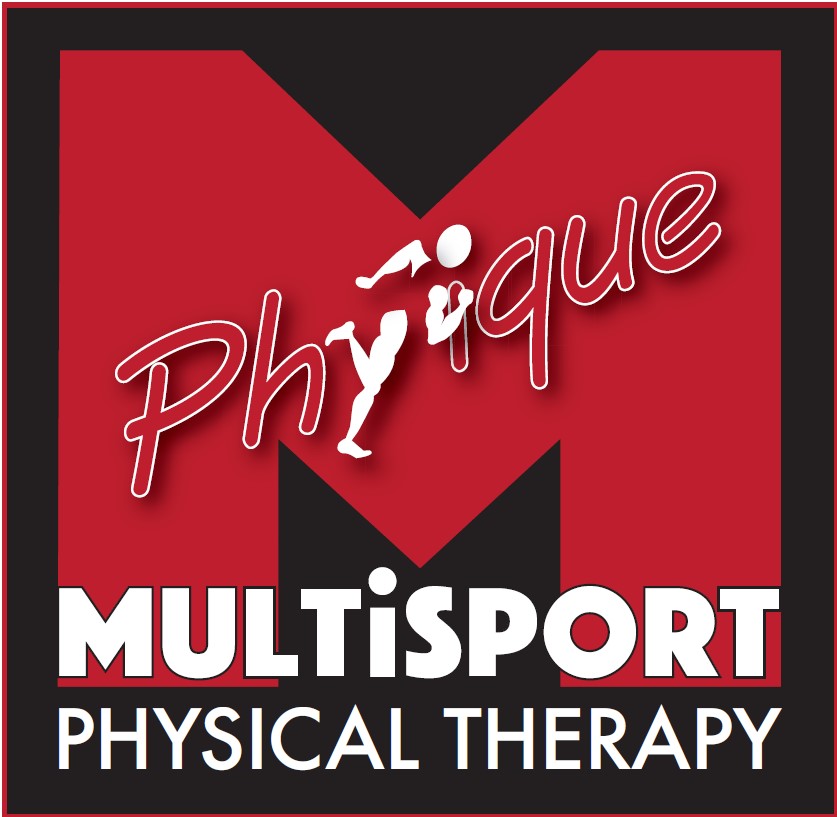Matias Negatu

I recently talked triathlon with long time TCSD member Matias Negatu. Matias has done a few Ironmans around the world including finishing the brutal Ironman Lanzarote in 2006 in 12:21:00 and Ironman Brazil this year in 11:26. Join me as we get to know Matias.
Craig: How did you get started doing triathlons?
Matias: I ran track and cross country in high school and did great. So, by default when I started college at Cal Poly, San Luis Obispo, I joined the track team. Juggling engineering with demanding track training was cumbersome. I kept getting injured. The last injury was bad enough to put me in the pool and on the trainer for a few months. I enjoyed the variety, so I joined the Cal Poly Triathlon Club. I met a lot of new friends, great people, and had more time to study, while staying active physically in a demanding college schedule.
Craig: What was your first triathlon like?
Matias: My first official triathlon was Wildflower Olympic ’93. I borrowed a surfing wetsuit from a friend. The swim start was memorably nerve raking. I exited the water spent and with a bleeding neck from the Velcro on the wetsuit that rubbed the whole time. Going up the first hill at the start of the bike leg, I started having doubts whether I was going to enjoy doing this long term or not. As the race progressed in the valley, I remember how hot it was under my helmet, as I had a full head of curly hair. I remember setting goals for the next race, as I struggled over the last hill on the bike leg. I raced the bike that I commuted to school with. It was one of the earlier model Trek road bikes from the 80s, a bit rusty but functional enough for a used purchase price of a hundred dollars. The run was my strength, as I had fun passing people. The nude volunteers were a shock and good distraction. I finished above average, just enough to keep me motivated in and training.
Craig: Ah, yes. That nude aid station is one of the perks of Wildflower. What prompted you to try Ironman distance racing?
Matias: Out of college, I continued to race in triathlons, relocating to Vancouver, Washington. I joined the Gecko Tri Club in Portland, and continued to race in some interesting events. Most of the races were set in fresh water lakes and remote and scenic bike courses. I did the Cascade Lakes Half Iron race in Bend, Oregon and placed 5th overall. The race was challenging with lots of altitude gain, not to mention heat. Best of all, I did it with a fractured hip from a hiking accident a few days prior (I learned I had the fractured hip post racing of course). Finishing that race and feeling good afterwards got me to start thinking about Ironman.
Craig: Which Ironman races have you done and how did you do?
Matias: Ironman Florida, 1999, finished with a time of 10:31. Ironman California, 2001, finished with a time of 11:08. Ironman Lake Placid, 2002, DNF (ITB at mile eight of run prevented me from finishing). Stubborn, I attempted to do Vineman four weeks later, not to finish again due to pain. Ironman Switzerland, 2004, 11:25, recovering from ITB pains. I discovered the major culprit behind my ITB issues was my seat height. So, in 2005, I made the adjustment at Ironman Canada finishing behind you at 10:48. I was happy with the time, given the conditions for the day. That gave me enough confidence to do a race that doesn’t get enough coverage, Ironman Lanzarote, 2006. It was a year to remember with record winds. I finished in 12:21. This year, I completed Ironman Brazil in 11:26, with stomach issues and nausea. I am looking forward to another race where my fortunes line up.
Craig: That’s interesting. We’ve overlapped at 3 Ironmans – Florida 1999, California 2001 and Canada 2005. Lanzarote (in the Canary Islands, north of Africa) is famous for being the toughest Ironman event, even tougher than Kona as people predict their Lanzarote time by adding 1+ hour to their Kona time. What made you select Lanzarote?
Matias: I chose Lanzarote for several reasons. I have been trying to qualify for Kona, never succeeding. I wanted to choose a race that was tougher than Kona. The number of participants was half that of a typical North America Ironman event. Best of all, it was a unique destination for a honeymoon. It gave my wife and I an opportunity to see Spain after the race.
Craig: Tell us about your race at Lanzarote?
Matias: Ironman Lanzarote was on May 20, 2006. On May 15th, my wife and I flew from San Diego through Atlanta to Barcelona. In Barcelona we had to get our luggage and change airlines and had our first taste of Spanish culture. We learned quickly that our idea of orderly lines and taking turns was a little stricter than theirs. We made our connection out of Barcelona and flew into the city of Arrecife on the island of Lanzarote, one of the Canary Islands located approximately 1000km from Spain and 100km from Morocco. The first thing we noticed once we landed was how dryly hot and windy it was. We took a short taxi ride from the airport to the beach town of Puerto Del Carmen and our Aparthotel Barccarola. This put me within walking distance of the transition area as opposed to the host hotel, Club La Santa, which was on the other side of the island in the middle of nowhere. Club La Santa had a prison fortress feel to it. We were glad we were not staying there upon visiting it during the race talks.
Arriving a few days before gave me enough time to adjust to the eight-hour time difference, get acquainted with the local area and research the race course. One day was spent in a rental car driving the bike course, enjoying the scenery on the island and going to the host hotel for check-in. The island has a few small towns but is mostly unpopulated. The terrain was of lava rock, sand, and diehard palm trees. Most of the homes were adobe style, concrete to survive the high winds, and white to reflect the fierce sun. The roads were very narrow and in places of the switchbacks on the hills, only wide enough for one compact car. Also, on the day I drove the course, it was hot and windy at sea level but extremely foggy and cold at the top of the mountains. One hiccup I encountered happened as I was unpacking and starting my race prep. I realized that I had forgotten my Thermolite electrolyte pills. Thinking, oh this is an Ironman race and that there will be lots of stuff at the expo for the athletes, I didn’t stress too much about it. However, when I asked every vendor there and was met with a “what do you need salt for?” look, I began to worry. Everyone was more than helpful and gave suggestions on where to obtain such a thing. Our quest took us from the expo to the one bike shop on the island to a nearby pharmacy, then back to the main city where we went from a gym to a nutrition store to yet another pharmacy where finally, thanks to our Spanish speaking friend, Elizabeth Halouzka, who had traveled to the island to also do the race, we got something that worked. We bought an electrolyte recovery mix packaged in envelopes, along with an herbal supplement for joint pain packaged in gel-caps. That night, my wife did a quick calculation for electrolyte content, emptied all the gel caps of the herbal supplement and refilled them with the electrolyte drink mix. Finally, I was able to relax about my nutrition and focus on the race. The night before, after everything was checked and re-checked, I ate a light pasta meal and went to bed to listen to the howling wind and the mosquitoes. Sleep was nonexistent.
Race morning was very windy and warm enough to walk in shorts and a tee shirt. At 5:30 am, we walked from the hotel down the main street to the transition area. Along the way, we saw a disco club closing its doors from the night before and several drunken partiers trying to find cabs home. We couldn’t believe they were just finishing their day as I was starting mine! It was still dark setting up in transition. After taking my time I headed down to the beach to start just as the sun was rising. The swim was very well marked and didn’t create the usual blender that most Ironman races have. The two loops in the water were choppy. My friend, Elizabeth, who is a super swimmer usually coming out with the pros, actually ran into the course marking middle line and got caught in a pack. To my surprise, I exited ahead of her just at one hour, a PR swim for me.
In the transition area, I was doused and lubed up with suntan lotion by some Spanish senoritas while changing into my race suit. I didn’t know if I was at the right transition place. I looked around and there were other men and women getting the same treatment. My bike started out smoothly through the main streets in Puerto Del Carmen. As soon as I made a u-turn and started heading east towards Yaiza, cross winds from the Sahara Desert and the Atlantic were upon me. I reached down to get my water bottle, and my front wheel was almost taken out from under me. The Zipp 404 race wheels were not cut out for the cross-winds. I had feared that earlier when I saw that almost all the athletes had low profile wheels in addition to road bikes instead of tri bikes. It was so scary that my mindset went from race mode to survival mode in an instant. I was not able to keep up with hydration and nutrition while fighting the winds. I had a few more near falls. Soon the hills were upon me, and the wind continued to pick up as I headed towards Club La Santa on the North part of the island. The largest elevation gain came along with Mediterranean winds heading up to Mirador del Rio at about mile 70. It marked the highest point of the bike which had an overall elevation gain of 8,300ft. The winds continued to attack in bursts. Heading back to Puerto Del Carmen I can only recall having tail winds for only 3 miles at the most. I have done double centuries and many Palomar loops totaling over 100 miles. The Lanzarote bike course was by far the most taxing both emotionally and physically. Perhaps this is because 2006 was one of the hardest years in the race’s history.
Starting the run, the temperature had risen into the 90s. For the four loops of the run along the waterfront, the streets of Puerto Del Carmen were lined with beer drinkers, elderly European tourists with puzzled looks on their faces, locals doing their weekend gym and spin sessions with music outdoors, and open air outdoor urinals (which I made use of). The atmosphere was energizing. The winds blew the sand into my face but I didn’t care, I was glad to be off the bike. The asphalt was hot on the feet. I made sure I grabbed everything wet at the aid stations. I saw my wife ringing the cow-bell and cheering which helped keep me going. I felt great that my ITB was not a factor for the first time in an Ironman. I was able to run negative splits and crossed the line with a 3:39 marathon. I had just finished the hardest Ironman; it was most exhilarating.
I staggered into the med-tent only to find all 100 beds occupied with athletes getting IVs. I managed to get a bed and an IV assigned to me. The first medical assistant attempted to get a line started but poked all the way through the vein. A second guy came and tried my other arm but was unsuccessful. Finally they had started the IV in the back of my hand only to find blood backing up into the line. This was taking too long partly because the medical staff was overloaded. After several trials, I got some fluids in me but didn’t feel better. As if the race wasn’t enough, I had other bruises and pains from a med tent. I was happy to be out of there and see my wife. My wife said I was in there for two hours but I thought it was 15 minutes. We trekked back the mile to the hotel in the dark, bringing a close to this unforgettable experience. It’s the most memorable of all the races I have done.
Craig: What are your favorite things about being a triathlete?
Matias: It’s a great way to learn to balance everything. The lessons I have learned in doing triathlons are directly applicable to real life. On the soft side, I like traveling to races, meeting new faces, and challenging myself to new heights with each season.
Craig: What are the first things that come to mind when you think of the Tri Club?
Matias: Club races. Deadman camp. Socializing. And I can’t forget the great raffle prizes. I have only won once in the last 30 or so meetings I have attended.
Craig: What would be your dream job in the sport of triathlon?
Matias: I would like to take the guess work out of bike fitting. I have resolved a lot of issues, including three seasons worth of ITB pain with proper bike fit. Being an engineer, I want to put numbers to everything. I would like to see someone have the perfect fit that keeps them healthy, injury free, and gives them the most power and aerodynamic advantage. I like reading about professional bike fit opinions, meeting others that do fits, and learning. I have personally been working on others’ fit as well as my fit for as long as I remember. Every time I think I have the right fit, I find ways to improve it.
Craig: Do you have any funny stories from your years of training and racing?
Matias: I used to train in Vancouver, Washington. I enjoyed riding out to the lakes, getting a swim in, and riding back as part of training. I once swam in Vancouver Lake, only to get a mysterious fungus on my chest that spread and took two years to get rid off. Later, I discovered that the lake had been quarantined and shocked for bacteria.
I was once flying back from Singapore on business and pleasure. I had taken my bike with me to do a race on Sentosa Island. On the way back, the security questioned what this device with rollers was about in my carry on. I told him it was “The Stick.” He called his supervisor, as he kept bending to see how flexible it was and had a feeling that it was some sort of weapon. I grabbed it from him, told him to turn around and rolled it on his shoulders repeating the word “massage.” They replied back, “ah, massage,” and set me free to catch my flight which I was about to miss.
One year doing the Wildflower Long Course, I got a flat tire. I pulled over quickly and took the wheel off to do a quick tube change. I kept looking for my tire lever for a whole five minutes. Desperate and nerve racked, I was cursing up at the sky when suddenly something fell to the ground. It was the lever that I had been holding in my mouth the whole time.
Craig: What are your long range goals with triathlon?
Matias: I would like to continue to do triathlons as long as I live, qualify and do Kona once or more times, and continue to improve always finding ways to do better.
Craig: Thanks Matias for sharing your story. You are going to get that slot to Kona. Your friends at the Tri Club are looking very forward to celebrating your success!








